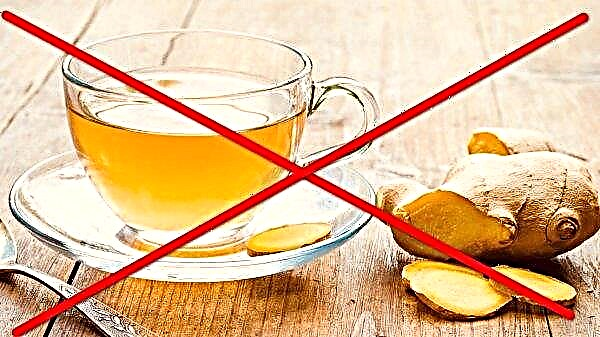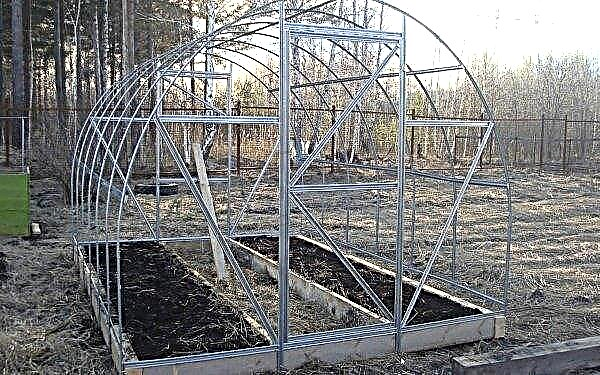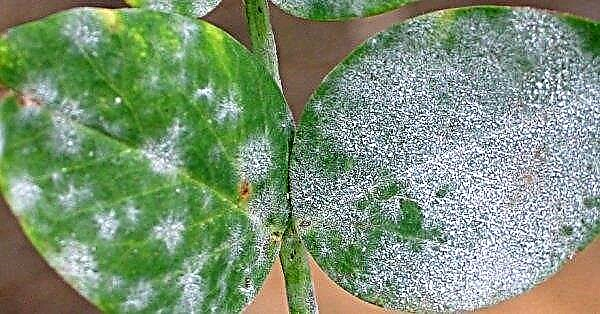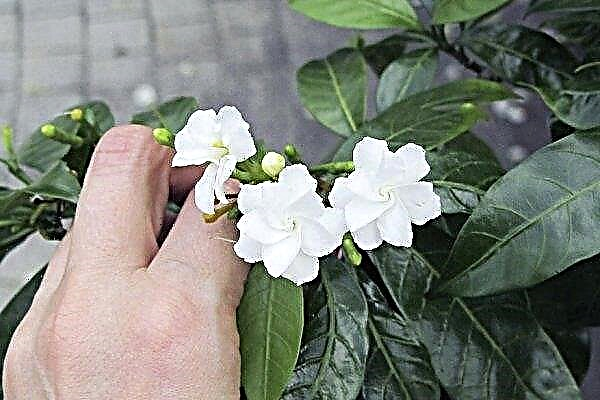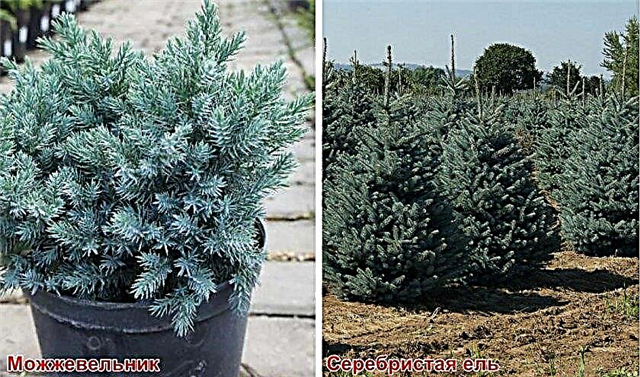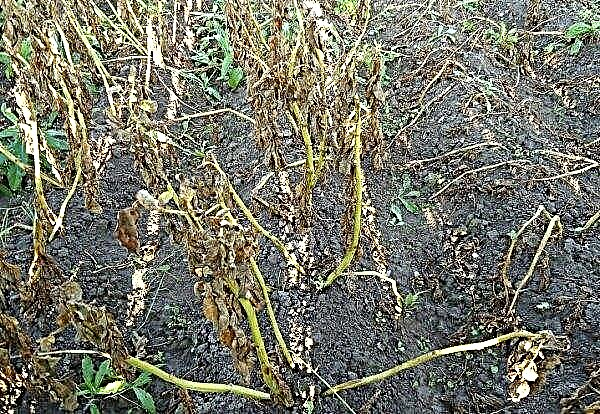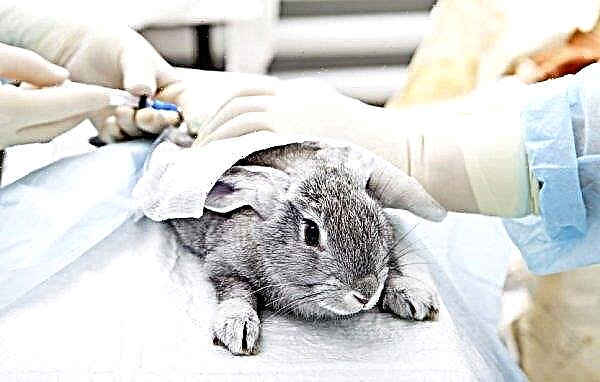Many people love the first early tomatoes and buy them in supermarket markets. But skilled gardeners can grow a dozen bushes of very early tomatoes and enrich their diet with natural products from the home garden. In this article we will look at what the Summer Garden F1 tomato hybrid represents, we’ll tell you how to grow seedlings from seeds at home, describe step by step caring for the plants, up to the ripening of the fruits.
Did you know? Tomatoes have an antiseptic effect, as they contain vitamin C and beta-carotene. Vegetables are excellent antioxidants and help neutralize free radicals, the presence of which increases the risk of cancer.
Variety description Summer Garden F1
The variety is intended for cultivation both in an open bed and in film tunnels. This is an ultra-early tomato hybrid obtained by Russian breeders. The hybrid Summer Garden F1 in 2001 was included in the Rosreestr of tomato varieties. The plant is determinant (with a limited growth point), the bush is compactly formed, but does not have a standard structure, the height of the plant reaches 50 cm. The brush is simple, from 5 to 8 tomatoes in the brush. From the moment of sowing seeds in the soil to the collection of the first fruits takes from 90 to 100 days. The hybrid has a high yield of at least 3-4 kg per bush. The fruits are red, dense, spherical, multi-chamber, do not have a green spot. Due to early ripeness they are used for the preparation of summer salads. The weight of tomatoes is from 100 to 140 g, in the first three lower brushes the tomatoes are larger than in all subsequent ones. The diameter of the fruit is suitable for canning in jars. Due to its density, tomatoes tolerate transportation well.
The hybrid has a high yield of at least 3-4 kg per bush. The fruits are red, dense, spherical, multi-chamber, do not have a green spot. Due to early ripeness they are used for the preparation of summer salads. The weight of tomatoes is from 100 to 140 g, in the first three lower brushes the tomatoes are larger than in all subsequent ones. The diameter of the fruit is suitable for canning in jars. Due to its density, tomatoes tolerate transportation well.
Advantages and disadvantages
In the eyes of gardeners, this hybrid has both advantages and minor disadvantages.
- Hybrid advantages Summer Garden F1:
- relative resistance to late blight, due to early ripeness;
- long-term temperature drops do not affect yield;
- the fruits ripen gradually, during the entire growing season;
- high productivity;
- lack of a green spot near the peduncle;
- there is no need for pinching and garter bushes;
- tomatoes are suitable both for fresh use, and for preservation and salting;
- good taste of fruits, good keeping quality and transportability.
- Cons Hybrid Summer Garden F1:
- tendency to crack in the area of the stalk in rainy periods;
- too dense pulp consistency and a large number of seeds.
Features of growing varieties at home
In order for the hybrid to reveal the productivity planted in it by breeders - tomatoes Summer Garden F1 needs to be grown through seedlings. Sowing plants with seeds directly into street soil will transfer the hybrid from early ripening to late ripening varieties, simultaneously reducing the number of fruits on the plant.
Did you know? Tomatoes can have different colors of the fruit (pink, red, yellow, orange, white or green). There are also varieties with fruits that have striped coloring (yellow with green or yellow with red).
Microclimate
It is important that the temperature in the room where the tomatoes are grown is in the range +18 ... + 22 ° C. A decrease in temperature threatens the development of fungal diseases. The heat helps to stretch young tomatoes, which leads to a thinning of the stem, the plant loses its color. Such seedlings have low productivity, prone to diseases and damage by insects. Dampness in the room is also unacceptable, since air humidity stimulates spore germination of fungi. To reduce air humidity, the room is ventilated twice a day. Tomato seedlings need full lighting, so seedlings are placed closer to the window opening. Gardeners also practice highlighting young seedlings using phytolamps.
Dampness in the room is also unacceptable, since air humidity stimulates spore germination of fungi. To reduce air humidity, the room is ventilated twice a day. Tomato seedlings need full lighting, so seedlings are placed closer to the window opening. Gardeners also practice highlighting young seedlings using phytolamps.
Seed sowing technology
Tomato seeds are sown 8-10 weeks before planting tomato seedlings in a permanent place. If the seeds are sown in early March, then they can be planted in the garden in about the second half of May. Land for growing tomatoes can be bought in garden centers or cook yourself. It is more convenient to stock up on soil before the onset of winter.
Good soil mixture for tomatoes: take the same proportion of leafy soil, compost and peat. The components mix well, after which they add 1-2 glasses of ash. The soil for growing young plants must be sterilized, since it often contains pathogens of diseases, viruses and insect larvae.
Did you know? Contaminated copper items (home decoration, jewelry) can be cleaned with tomato juice. The salts and acids contained in it help remove copper oxide, giving shine and brightness to copper objects.
Methods of soil sterilization:
- Annealing in the oven. Pour the soil mixture onto a baking sheet and distribute in an even layer (8–10 cm). The baking sheet is placed in the oven and heated for half an hour at a temperature of + 200 ° C. Cooled soil is used for sowing.
- Freezing This procedure is carried out in the winter, in December-January. In persistent frosts, the soil in pots or bags is carried outside (balcony). Freezing can last from two to three days to a month. A small amount of soil can be frozen in the freezer of a home refrigerator.
- Watering with hot water. Land in landing tanks is well shed with boiling water. After the excess fluid drains and the soil cools down - you can start sowing.
- Disinfection with a solution of potassium permanganate. A disinfectant solution is pre-prepared: for this, 1 g of manganese is dissolved in 1 liter of water. The finished solution has a pale pink color. Land in landing tanks is well shed with a disinfectant solution, thanks to which the soil will become clean from viruses and bacteria.
 Tomato seedlings can be grown in any suitable container. It is important to observe two conditions: the depth of the pot should not be less than 10-12 cm, its bottom should be equipped with one or more holes to remove excess water. Pots for growing can be made of wood, glass or porcelain, thick paper (cardboard). Before diving for each plant, 50 ml of soil is enough, after diving and before planting in the soil, at least 0.5 l of the soil is needed for each tomato.
Tomato seedlings can be grown in any suitable container. It is important to observe two conditions: the depth of the pot should not be less than 10-12 cm, its bottom should be equipped with one or more holes to remove excess water. Pots for growing can be made of wood, glass or porcelain, thick paper (cardboard). Before diving for each plant, 50 ml of soil is enough, after diving and before planting in the soil, at least 0.5 l of the soil is needed for each tomato.Important! When removing excess plant from the pot, you need to carefully cut the stem at the base of the tomato. It is not recommended to roughly pull the seedling out of the soil, so as not to harm the roots of a tomato growing nearby.
Before sowing seeds into the soil, they are subjected to processing:
- Purify from viruses, spores of fungi and bacteria. To do this, prepare a dark pink solution of water and potassium permanganate, in which seeds are placed for 25-30 minutes. After disinfection, the seeds become brown. Then they are rinsed in clean water and laid out on paper for drying or, conversely, on wet tissue for subsequent germination of sprouts.
- Stimulate rapid germination while providing additional nutrition. Already decontaminated, tomato seeds are soaked for 10-15 minutes in one of the growth stimulants. Growth stimulants can be bought at the store or use home remedies (honey, aloe juice). After processing in growth stimulators, tomato seeds are immediately sown in the soil.

Growing in an individual pot, without subsequent picking:
- Each landing tank should have a volume of at least 0.5 liters.
- The pot is filled with soil, leaving 1 cm of free space to the edge of the pot, two seeds are sown, and then lightly watered the soil. Seeding depth is 1 cm, the distance between them is 2 cm. Two seeds are sown in order to insure against poor germination of seeds. In the future, one sprout will be removed.
- Seeds are covered with earth, after which they are again moderately watered.
- The pot with seeded tomatoes is covered with plastic wrap and put away in a warm and dark place.
- Seeds will germinate in about a week. Germination periods are directly dependent on the heat in the room.
- Pots with seedlings are transferred to a well-lit place. This can be a window sill of a southern window or a table for seedlings, on which a special lamp is fixed for lighting plants.
- At the age of two weeks, by this time there will be a pair of true leaves on the plants, one of the seedlings is removed. Leave the most developed and strong plant.
Did you know? Tomatoes are a rich source of antioxidants, since lycopene in tomatoes is fat-soluble, doctors recommend eating tomatoes at the same time as olive oil or other vegetable fats.
Growing in a common box with further picking:
- The box should have the same qualities as an individual pot (depth not less than 10 cm and openings in the bottom).
- The soil is poured into the seedling box, leaving a free space to the side of 1–2 cm, the surface is leveled.
- Furrows (1 cm deep) are marked on the ground into which sowing will be carried out.
- Furrows are watered with water, after which seeds are laid out in them. The distance between tomato seeds is 1.5–3 cm. The row spacing is from 10 to 15 cm, according to the desire of the plant grower. Sown seeds are covered with soil, after which the soil is leveled.
- Crops are slightly watered over the surface of the soil, and put the box in a plastic bag. This is done in order to avoid quick drying of the soil. The seedling box is transferred to heat until the seeds peck.
- As soon as the first sprouts appear, a box with seedlings is installed on the windowsill.
- In the first month, seedlings of tomatoes growing indoors are watered as little as possible. At this time, seedlings are vulnerable to an outbreak of fungal diseases, in particular for the "black leg". The frequency of watering is increased at the end of March, after the seedlings have grown, and there will be 3-4 real leaves on it.
- A signal to the beginning of the pick will be the closure of the crown of young plants between the rows. Plants are planted in individual containers, where they will grow before planting in the garden.

Seedling Care
To grow healthy and strong seedlings you need:
- Shine. Seedlings growing in the house lack lighting, so they install lamps for seedlings. The backlight should have a daily spectrum. It can also be a special phytolamp from a garden store. Illumination is carried out twice a day, from 8 to 10 in the morning and from 16 to 18 in the evening.
- Soil moisture. From seedlings and over the next month, the soil under the seedlings is rarely moistened, optimally - only after the upper soil layer has dried. During this period, it is important to protect seedlings from an outbreak of solanaceous fungal disease called the "black leg". Conditions provoking the disease: lack of light in the room, cold air and dampness. In the initial period of growing tomato seedlings, the rooms are heated, so the soil in the planting containers dries quickly, and the plants require new watering. To reduce the frequency of soil moisture, the soil in the seedling box is covered with cut paper, which serves as mulch and prevents the evaporation of moisture.
- Hardening of young plants. In the first month of plant life - it is open for ventilation, twice a day for 15 minutes, the window. The intake of fresh air lowers the air temperature in the room, creating the basis for future hardening of tomatoes. From 30 to 45 days of life, the plants are aired for 30 minutes, morning and evening, gradually increasing the duration of the procedure to an hour. With the onset of April, the emergence of sustainable heat allows young seedlings to be carried outside for hardening. The duration of the street hardening time begins with half an hour, gradually increasing to a maximum. By the end of the second week of hardening, the seedlings remain in the open air during daylight hours. At night, pots with plants are brought into the house.
Important! Carrying out seedlings on the street for hardening, a partial shade under the cover of tree branches is chosen as the place for installation. It is not recommended to expose plants to the sun, as their leaves may suffer from scorching sunlight.
Planting seedlings in the ground
Tomatoes are planted in the garden after the ground is well warmed up. For the southern regions - this is the beginning of May, for areas with a temperate climate - the third decade of May, for the northern regions - the first week of June. Tomatoes can be planted under the film, starting from the second decade of April. Before planting seedlings, you need to prepare the soil. If fertilizers are introduced into the ground in the fall, you only need to loosen and level the soil, mark and make landing pits.
If the soil needs to be fed - mineral fertilizers (nitrogen and phosphorus-potash) are scattered over the soil, after which they are dug up with the fertilizer embedded in the ground. You can also use natural fertilizers, such as bird droppings or rotten cow dung. While still young tomatoes grow in planting containers, you need to process them on the sheet with one of the insecticides, such as “Karate” or “Aktara”. If this is not done, starving for the winter, Colorado beetles will eat young tomatoes to the ground. The leaves of the plants are sprayed with the preparation or each seedling is dipped in a basin with an insecticide solution.
While still young tomatoes grow in planting containers, you need to process them on the sheet with one of the insecticides, such as “Karate” or “Aktara”. If this is not done, starving for the winter, Colorado beetles will eat young tomatoes to the ground. The leaves of the plants are sprayed with the preparation or each seedling is dipped in a basin with an insecticide solution.
When planting tomatoes Summer Garden F1, you need to adhere to one of the planting schemes for undersized tomatoes:
- Scheme number 1. Planting tomato bushes in 4 rows, observing the distance between tomatoes of 30–35 cm, and row spacing of 40 cm. Plants in one row are staggered in relation to the bushes in the opposite row. This is followed by a track with a width of 50 cm. The paths in the scheme are provided not only for the convenience of a gardener to care for plants, it is also an important element in maintaining planting compaction.

- Scheme number 2. Planting tomatoes in two rows, observing the interval between the bushes of 30 cm, and the space between the rows of 30 cm. As usual, arrange the tomatoes in a checkerboard pattern, the width of the track is 60 cm.
The technology of planting tomatoes in the garden:
- Prepared seedlings are well watered (2-3 liters of water per well).
- Plants are carefully removed from the pots and set in the center of the planting pits.
- The free space in the hole is filled with soil, leaving a small concave hollow near the stem. Deepening is necessary for the convenience of future irrigation, since all water will be absorbed directly into the root zone of the plant.
- The planted bushes are once again watered at the rate of 0.5 liters of water per plant.
- A few days after planting, young plants need to be shaded from the scorching sun. You can cover the entire tomato bed over the plantings with agrofibre, or you can individually install near each plant, on the south side, newspaper sheets or branches with leaves.
Video: planting tomato seedlings open ground
Tomato Care Features
A worthy crop will be obtained only if the grower provides his tomato bed with everything necessary: fertilizer, watering, weeding and loosening. Also, an important role for the final result is the protection of plantings from parasites and diseases.
Important! Planting not seasoned seedlings (directly from the room) in the garden will lead to a long and painful adaptation of plants. Tomatoes that have gone through a difficult adaptation period are rarely fruitful, and such bushes of a plant grower will not please early tomatoes.
Fertilizer and watering
Tomatoes love moisture in the basal zone, but do not tolerate wet foliage, in which fungal diseases develop rapidly. In this regard, tomatoes can not be watered by sprinkling.For water supply, drip irrigation or root irrigation is used. The moisture requirement of tomatoes is approximately 3 liters per week for each plant. With frequent and sparse watering, plants develop roots not deep into the soil, but perpendicular to its surface, which increases the need for artificial irrigation of tomatoes. You can also grow tomatoes without irrigation. This method has proven itself in the middle zone, with a temperate climate, although even there the summer heat sometimes reaches +28 ... + 30 ° C. To apply this method, the planting holes for seedlings are made deep, at least 35–40 cm, well filled with water, at least 5 liters per bush, and seedlings are planted as deep as possible, leaving only the crown of the plant on the surface. After planting, the tomatoes are watered two or three more times during the week, after which the irrigation is stopped.
You can also grow tomatoes without irrigation. This method has proven itself in the middle zone, with a temperate climate, although even there the summer heat sometimes reaches +28 ... + 30 ° C. To apply this method, the planting holes for seedlings are made deep, at least 35–40 cm, well filled with water, at least 5 liters per bush, and seedlings are planted as deep as possible, leaving only the crown of the plant on the surface. After planting, the tomatoes are watered two or three more times during the week, after which the irrigation is stopped.
Without surface irrigation, the root system of the plant is not parallel to the surface of the soil, tomato roots go deep into the soil. The plant has enough moisture obtained during planting for the entire growing season. During the tying of the first brushes, tomatoes can be fed with potash fertilizers, but for well-seasoned fertilizers before planting, nutrients are sufficient for the entire growing season.
Shrub formation and pinching
The tomato hybrid Summer Garden F1 has a low bush, so it can be grown without garter. Such cultivation is practiced on vast tomato fields in farmers, but on small household beds, plants are still better tied to pegs stuck in the soil next to the plant. It is advisable to take support pegs from 60 cm to 1 meter high. The garter will not allow the fruits of the tomato to touch the soil, which means they will remain clean and will not get sick. Since spores of fungi that cause solanaceous diseases often overwinter in the ground. A short bush does not need to be shaped, and the removal of stepsons will deprive the gardener of a significant part of the crop. As a garter material, synthetic and natural thin cords or knitted fabric cut into strips can be used (old clothes can be used).
Since spores of fungi that cause solanaceous diseases often overwinter in the ground. A short bush does not need to be shaped, and the removal of stepsons will deprive the gardener of a significant part of the crop. As a garter material, synthetic and natural thin cords or knitted fabric cut into strips can be used (old clothes can be used).
Soil cultivation and weeding
Weeding and loosening are very similar procedures that differ from each other only in their ultimate goal. Weeding is carried out to clean the soil from weeds, and loosening is carried out to give the upper soil layer a friable structure. The need for loosening comes after the past showers, compacted the soil on the beds to a state of asphalt.
Did you know? From the 17th to the 18th centuries, British people were convinced that tomatoes were poisonous.
Weeding is carried out in the first half of the growing season of tomatoes every decade, but starting from the second half of the growing season, weeding is carried out once every two or three weeks. After the plants reach 40 cm in height, the bushes need hilling of the root zone. To do this, under the bush, they shovel the soil with a garden tool, the higher the basal hill, the better.
This procedure is important for building additional roots that will form at the point of contact of the plant trunk and soil. Additional roots will strengthen the bush, increase the yield of the tomato and its resistance to pests and diseases. Loosen and weed the soil on the bed with the help of a large Fokin plane cutter or an ordinary garden chopper with a wide blade.
Diseases and Pests
The tomato hybrid Summer Garden F1 is a very early plant, so usually (when grown through seedlings) manages to "slip away" from fungal diseases. Nevertheless, with late planting with weak, not seasoned seedlings or in conditions of thickening, the hybrid can be affected by such diseases:
- Phytophthora.

- Bacteriosis.
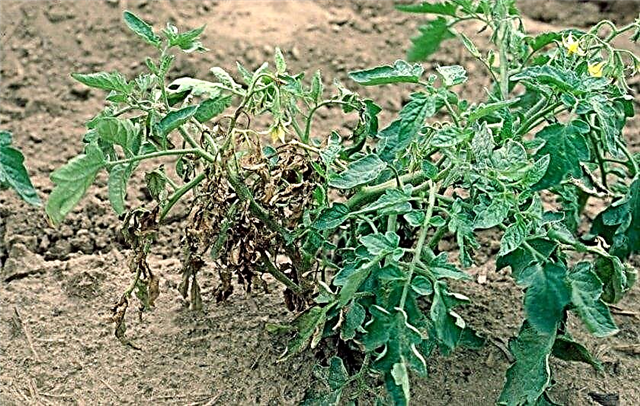
- Vertex rot.
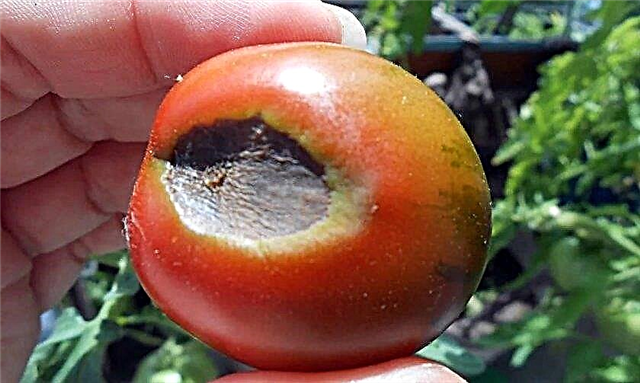
- Phomosis.

In order to prevent an outbreak of these diseases on the tomato bed, gardeners begin preventive treatment of the hybrid with preparations containing fungicides. Well-proven drugs: Fundazole and Quadris, Bordeaux mixture and Oksikhom. The first preventive spraying on the leaf is carried out after 14 days from the planting of bushes in the garden.
The procedure is repeated three times at intervals of 14-21 days. Through time, systemic and contact fungicides are used, this is necessary so that the pathogens do not adapt to the drugs. Fungicides are quite compatible with insecticides, therefore treatment against diseases can be combined with treatment against pests.
Pests hazardous to tomatoes:
To combat parasites on Solanaceae, you can use drugs "Aktara" or "Actellik", as well as tinctures on tobacco or wormwood according to popular recipes.Prevention of an outbreak of fungal diseases on tomatoes:
- compliance with crop rotation and planting patterns;
- thickening of landings is unacceptable;
- tying bushes to pegs by 50% reduces the possibility of disease;
- timely collection of fruits, prevention of rearrangement of the crop on the bushes;
- conducting treatments for diseases and parasites (chemicals and folk remedies).
Harvesting and storage
When planting an adult, seasoned and well-developed seedlings at the age of 2.5 months, the first fruits on the hybrid begin to ripen one and a half months after planting in the garden. If the gardener removes the tomatoes from the mother plant as soon as they begin to grow brown, this will make it possible to quickly ripen the tomatoes remaining on the bush and tie in new fruits. Unripe tomatoes can ripen outside the mother bush. They are well stored in cardboard boxes. Tomatoes can be stacked in a box in two or three layers, after which the containers are stored in a room where the air temperature exceeds +18 ... + 20 ° C. The above recommendations for sowing seeds and growing a tomato hybrid Summer Garden F1 will help to get an excellent harvest of delicious and high-quality fruits of this variety.
They are well stored in cardboard boxes. Tomatoes can be stacked in a box in two or three layers, after which the containers are stored in a room where the air temperature exceeds +18 ... + 20 ° C. The above recommendations for sowing seeds and growing a tomato hybrid Summer Garden F1 will help to get an excellent harvest of delicious and high-quality fruits of this variety.






